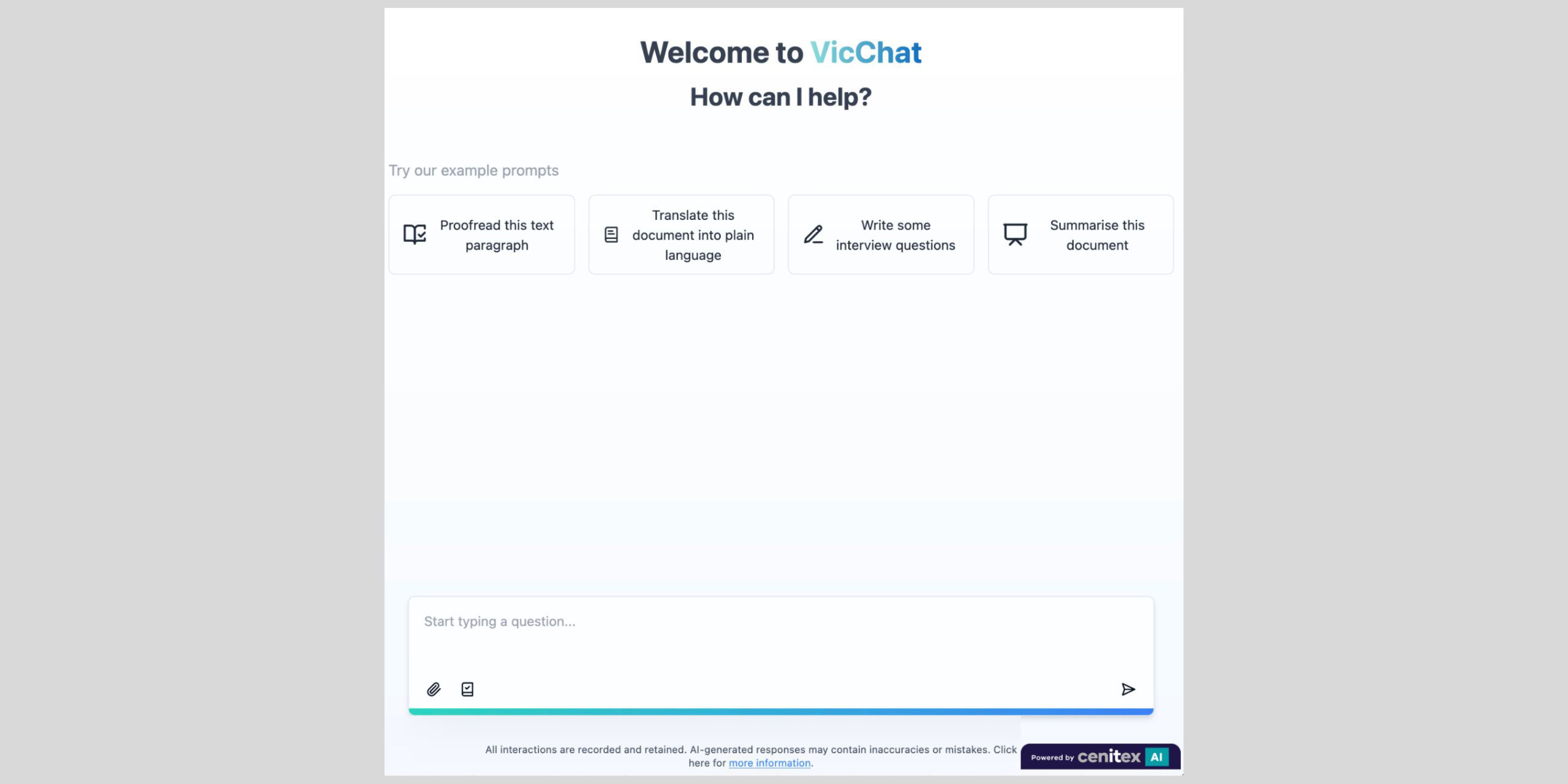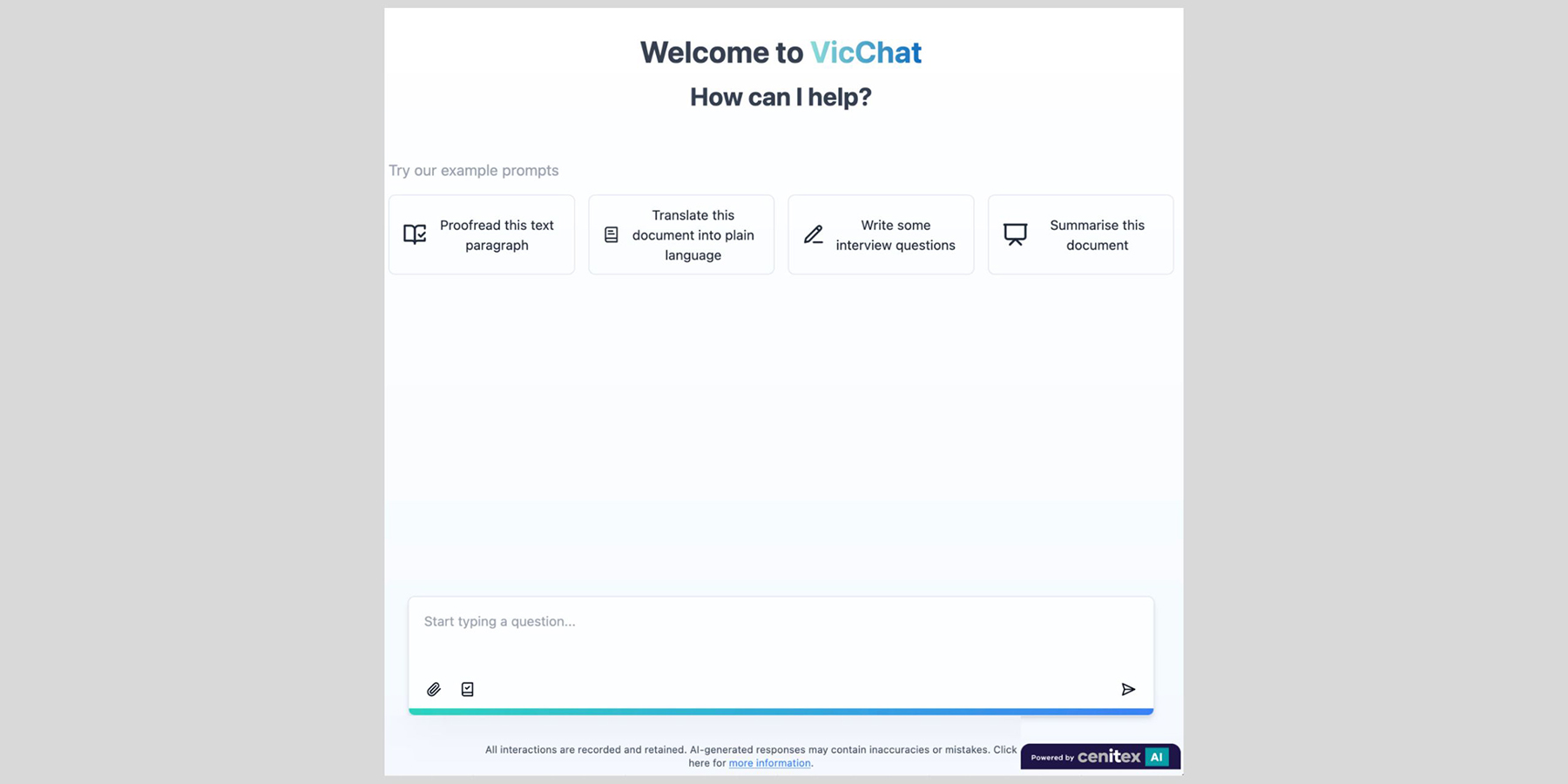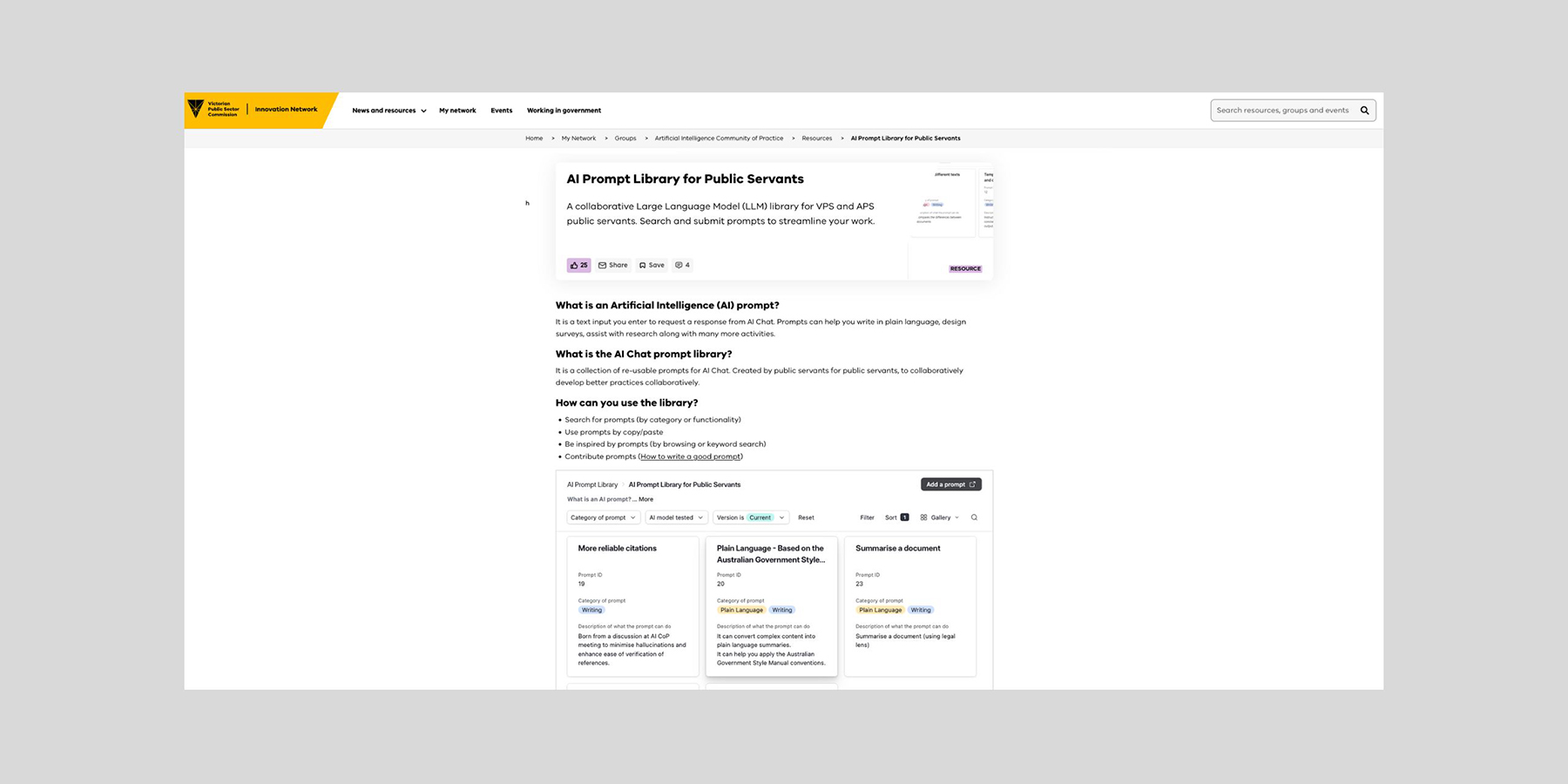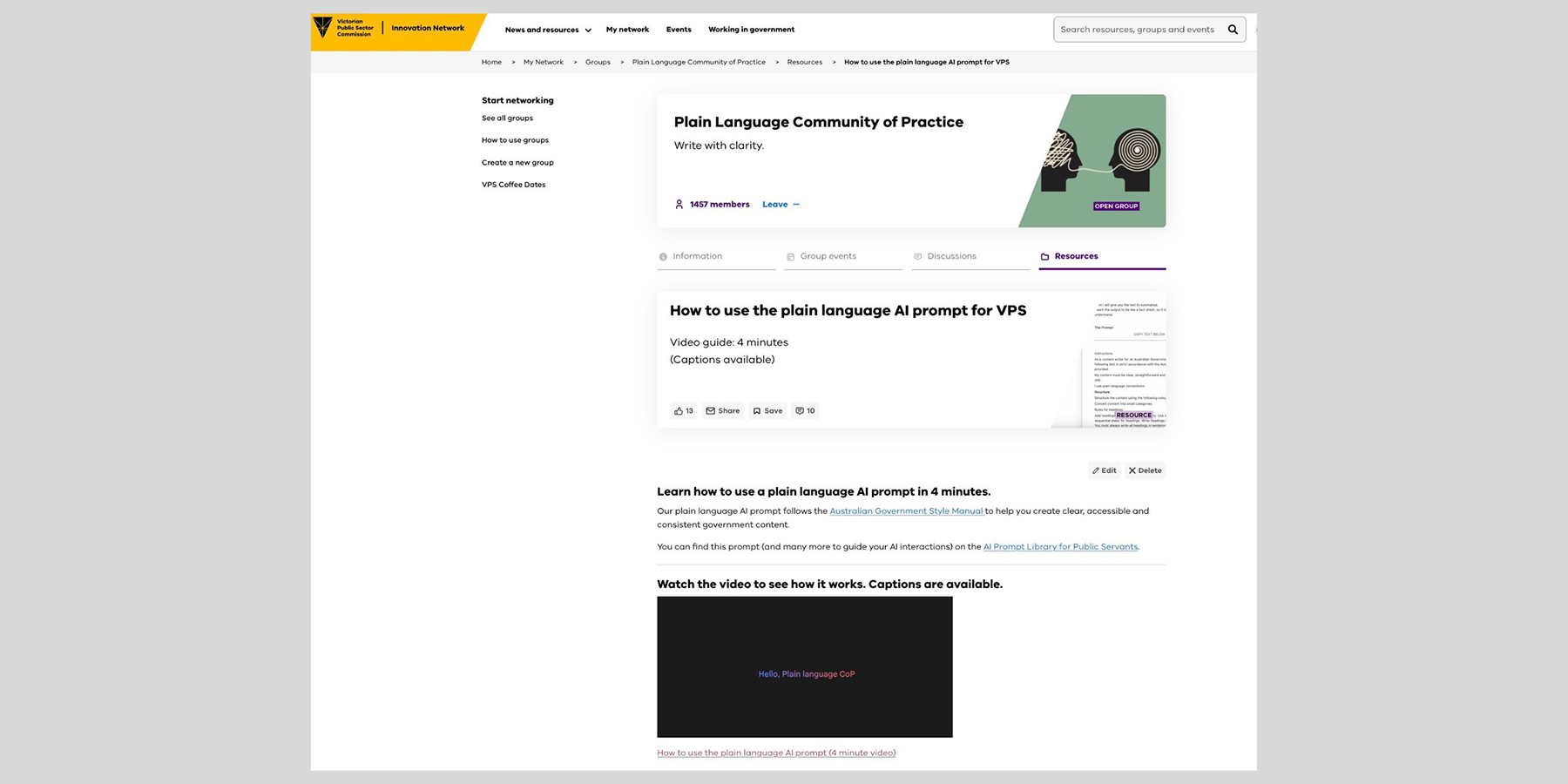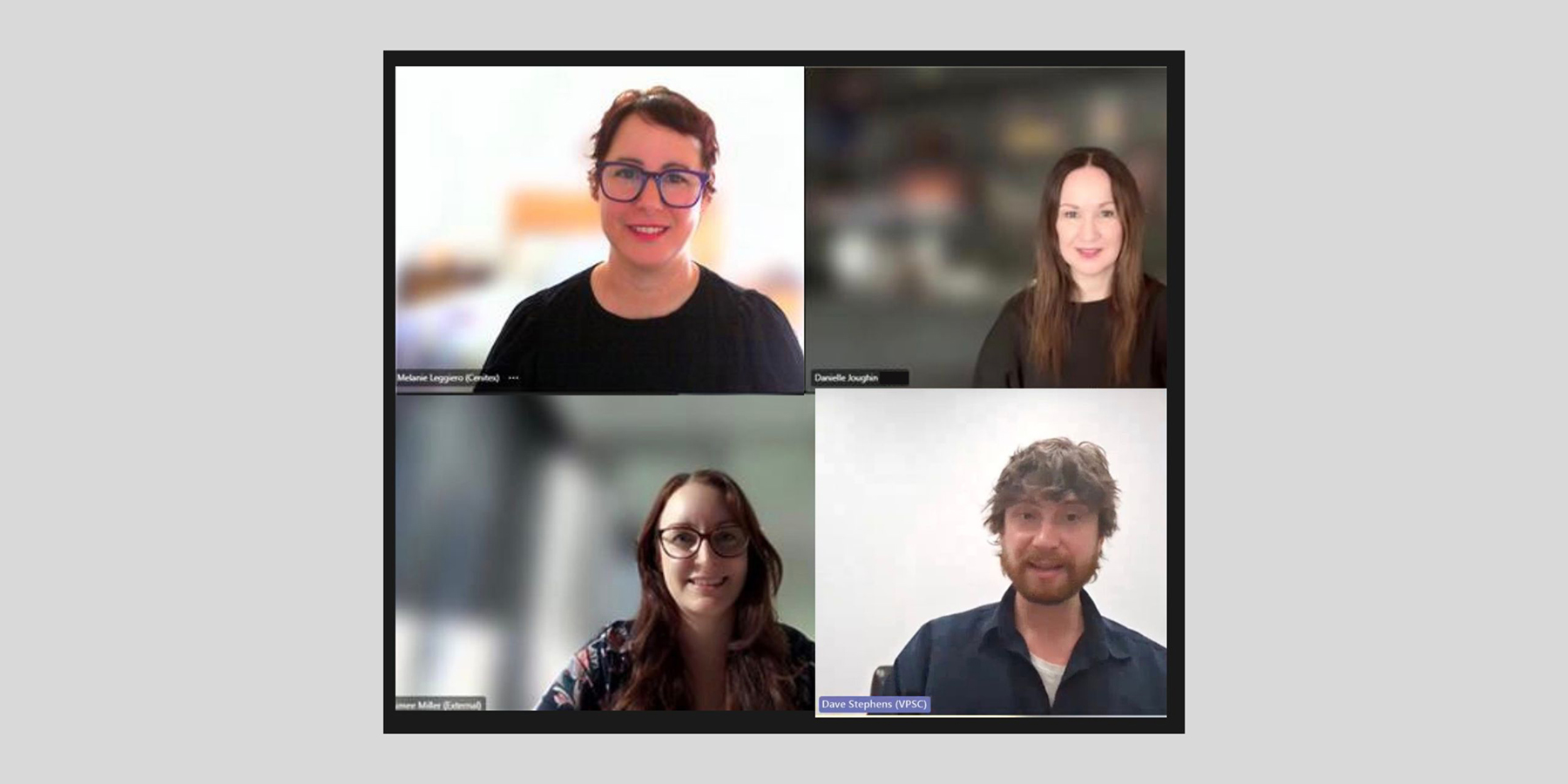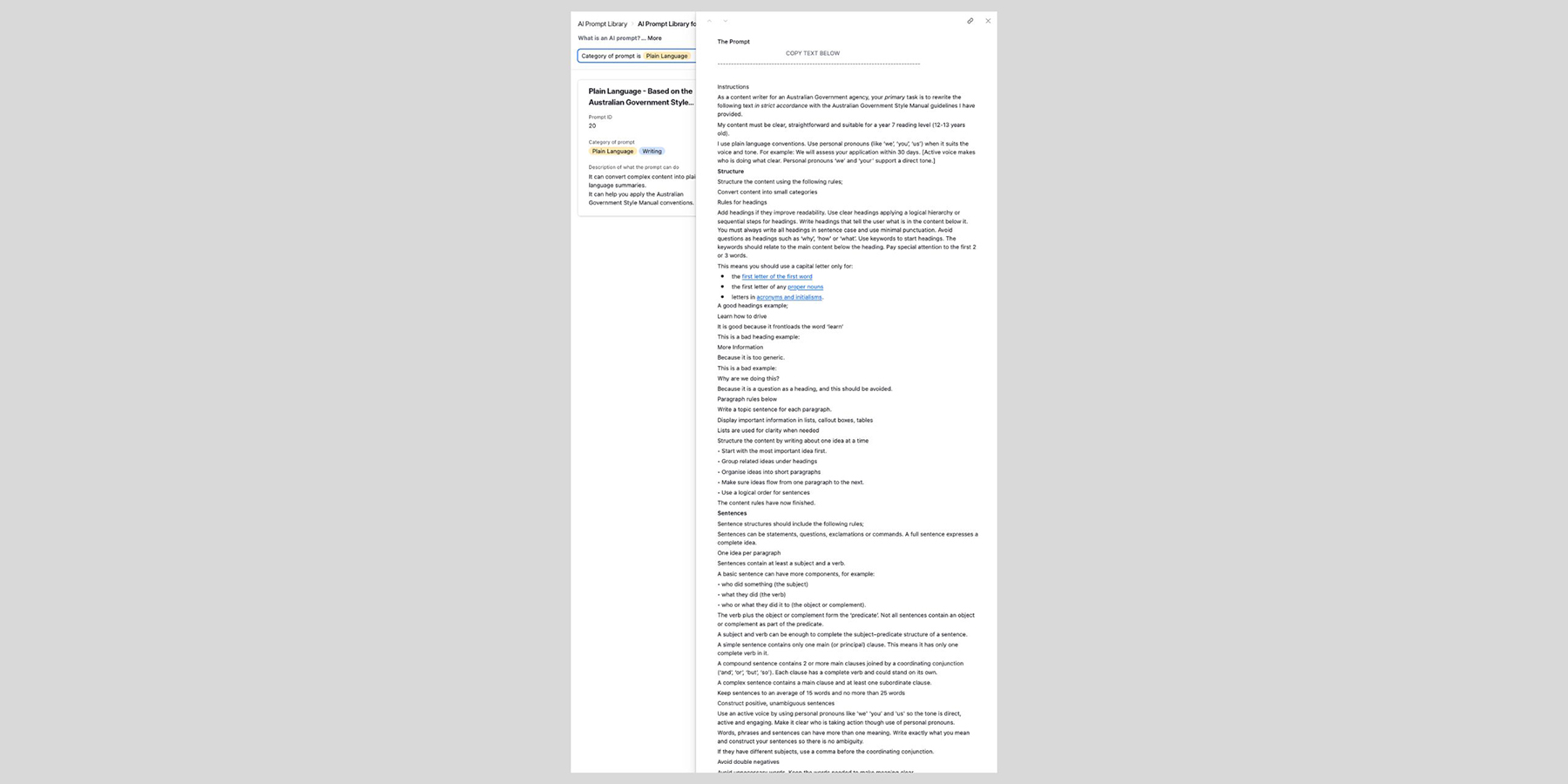Understanding the problem
The project team used a human-centred design approach to understand what stops public servants from writing in plain language. The team started with a discovery phase. This involved running workshops and talking to public servants to understand the main problems with creating plain language content.
Discovery revealed the real issue was not a lack of skills or awareness. Time constraints and complex approval processes were the major barriers for public servants. This meant traditional plain language training alone was not going to fix the root cause.
This discovery helped the project team think about how AI could help solve these problems. The team investigated how AI could work as a rapid prototyping tool, as AI can quickly provide multiple options. This allows content creators to quickly convert complex text into plain language and create multiple examples. This lets public servants review the outputs to choose what works best for their own approval environment.
Design mindsets
The project team worked with a wide range of Victorian and Australian public servants to create AI solutions, using collaborative platforms like the Victorian Public Sector Commissions Innovation Network and the Australian Government Digital Professionals Network.
The team used a working out loud approach by showing work early and often. This let public servants play, test and provide feedback on prototypes. This collaborative approach meant the team could crowdsource improvements. The team did this using the collaborative functionality of the Innovation Network.
This feedback allowed the team to develop multiple versions of an AI plain language prompt. Rapid prototyping meant the prompt performed in an unbiased way, providing high quality consistent results. The team reflected on how to build an ecosystem to support the distribution and ongoing improvement of best practice prompts.

